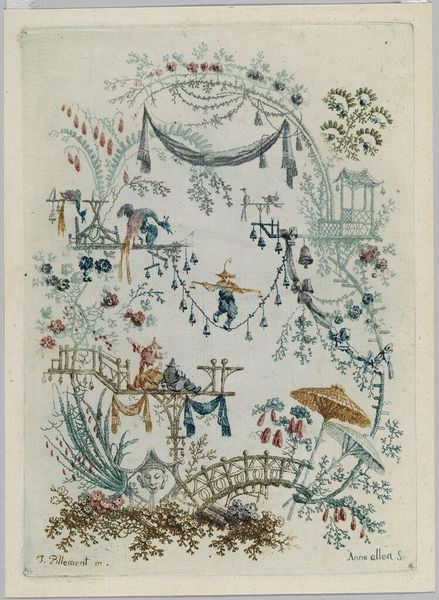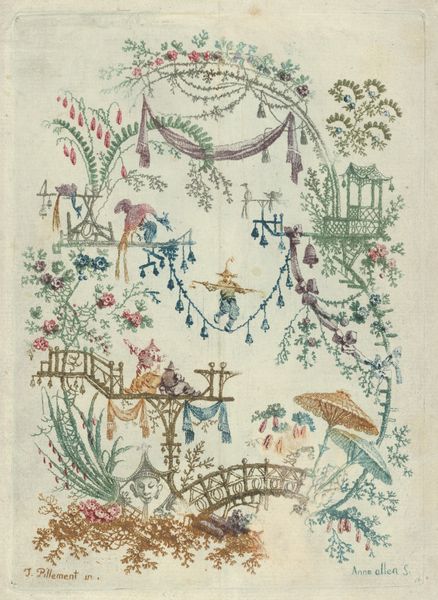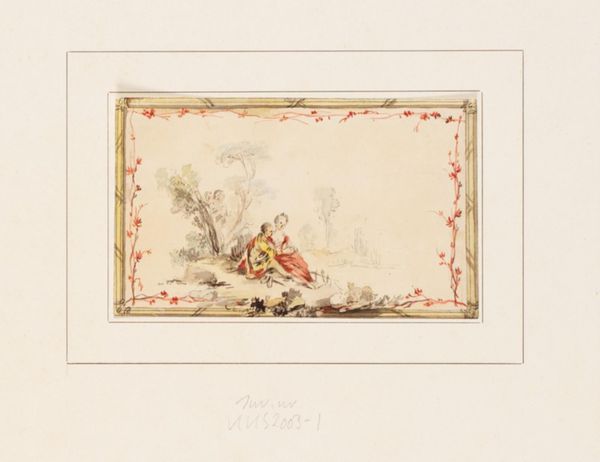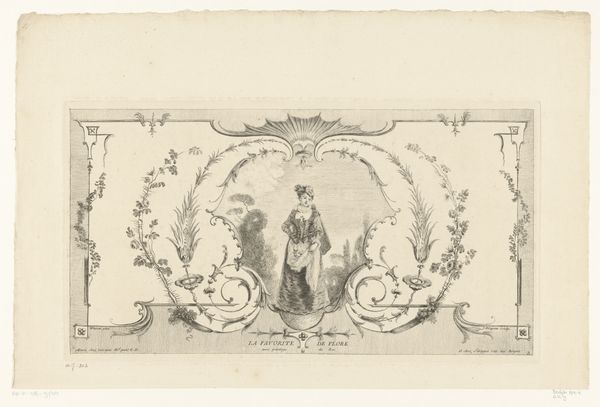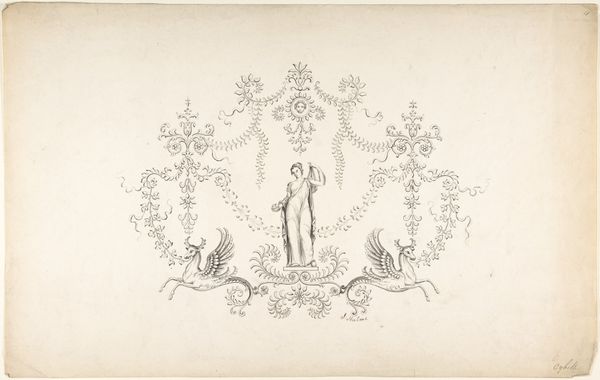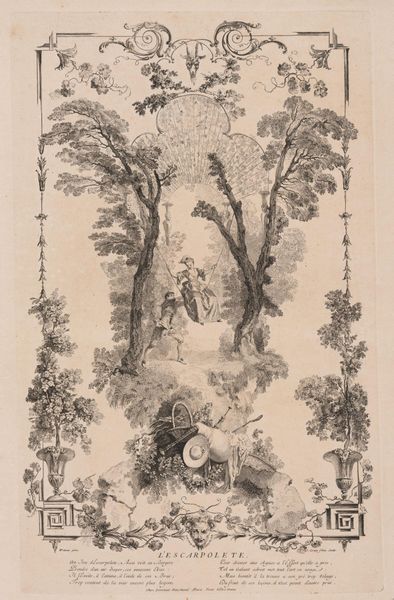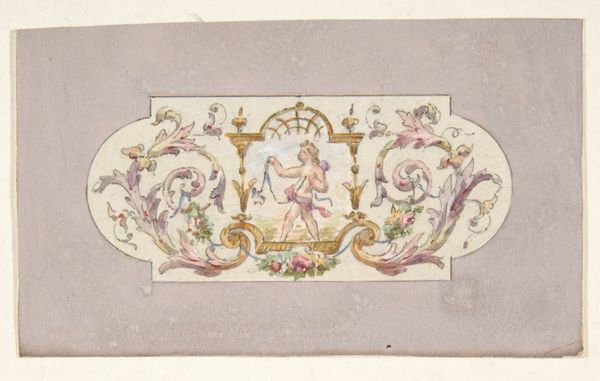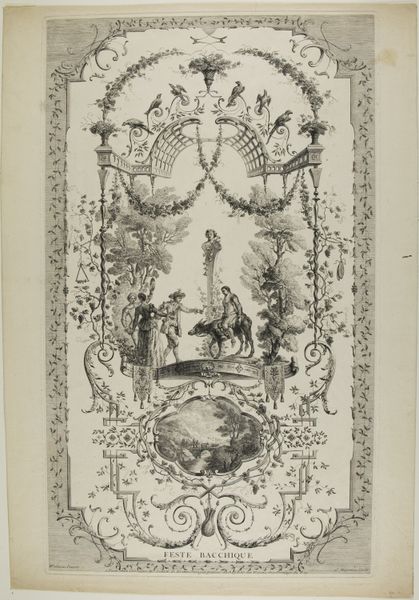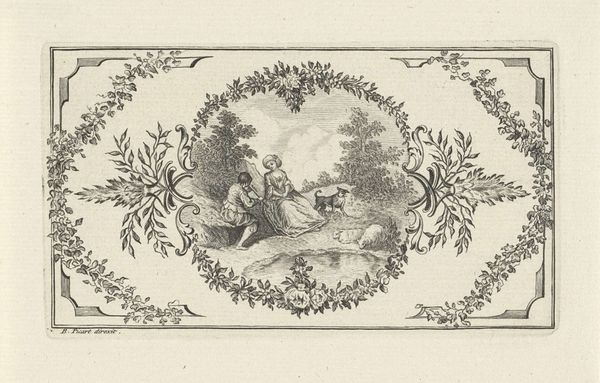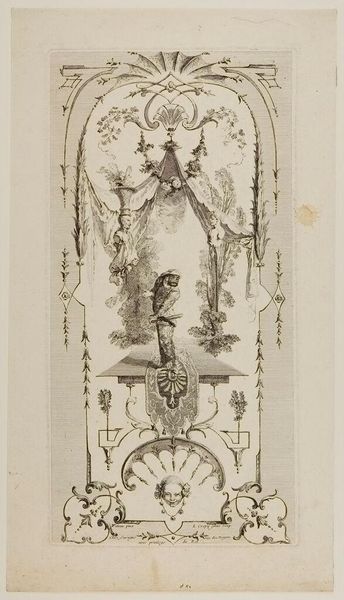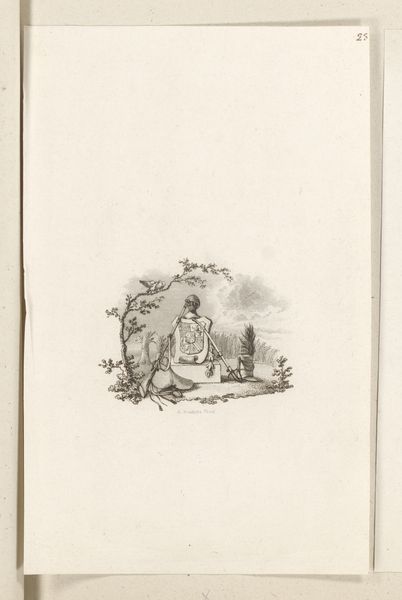
Dimensions: height 188 mm, width 295 mm
Copyright: Rijks Museum: Open Domain
Curator: This delicate drawing is titled "Design sketch in Chinoiserie style" and is attributed to Abraham van Strij, dating sometime between 1763 and 1826. The piece uses watercolor and drawing media. What's your immediate impression? Editor: It's ethereal. The pale palette and meticulous linework evoke a sense of refined fantasy, a sort of dreamlike tableau. It has a gentle lightness of being that feels very comforting. Curator: Indeed. The use of Chinoiserie immediately suggests a Western fascination with the East, specifically China, popular during the Rococo period. Notice the tent-like structure in the central panel, with figures adorned in what would be considered vaguely “oriental” garb at the time. Editor: Absolutely, and consider the symbolism of the birds. Suspended in cages and flanking either side of the scene, these creatures have long represented confinement and unattainable dreams. Are they reflections of societal constraints imposed during the period or purely ornamental motifs of a fanciful style? Curator: Good question! But let’s also analyze the structural repetition—the way elements like floral swags and decorative vases are mirrored within each vertical panel. This introduces a structured symmetry. Editor: While visually engaging, this constructed balance also implies a fabricated view of the Orient. The scene is curated, tamed. It's an arrangement meant to delight rather than enlighten. Note, even the single, stylized palm curls artificially overhead, as if part of the scenography. Curator: A vital observation! The pastel palette too contributes, almost homogenizing diverse forms into a wash of pleasing harmony, which emphasizes surface decoration above detailed symbolic communication. It’s design intended to evoke mood rather than convey complex narratives. Editor: Perhaps. It leaves one considering the legacy of art, its relationship to culture, and our shared longing to comprehend people beyond geographical divides—whether achieved through actual dialogue or ornamental symbolism. Curator: Yes, this design really makes us wonder whether our visual pleasures reinforce or complicate our understanding of other cultures. Thank you.
Comments
No comments
Be the first to comment and join the conversation on the ultimate creative platform.
